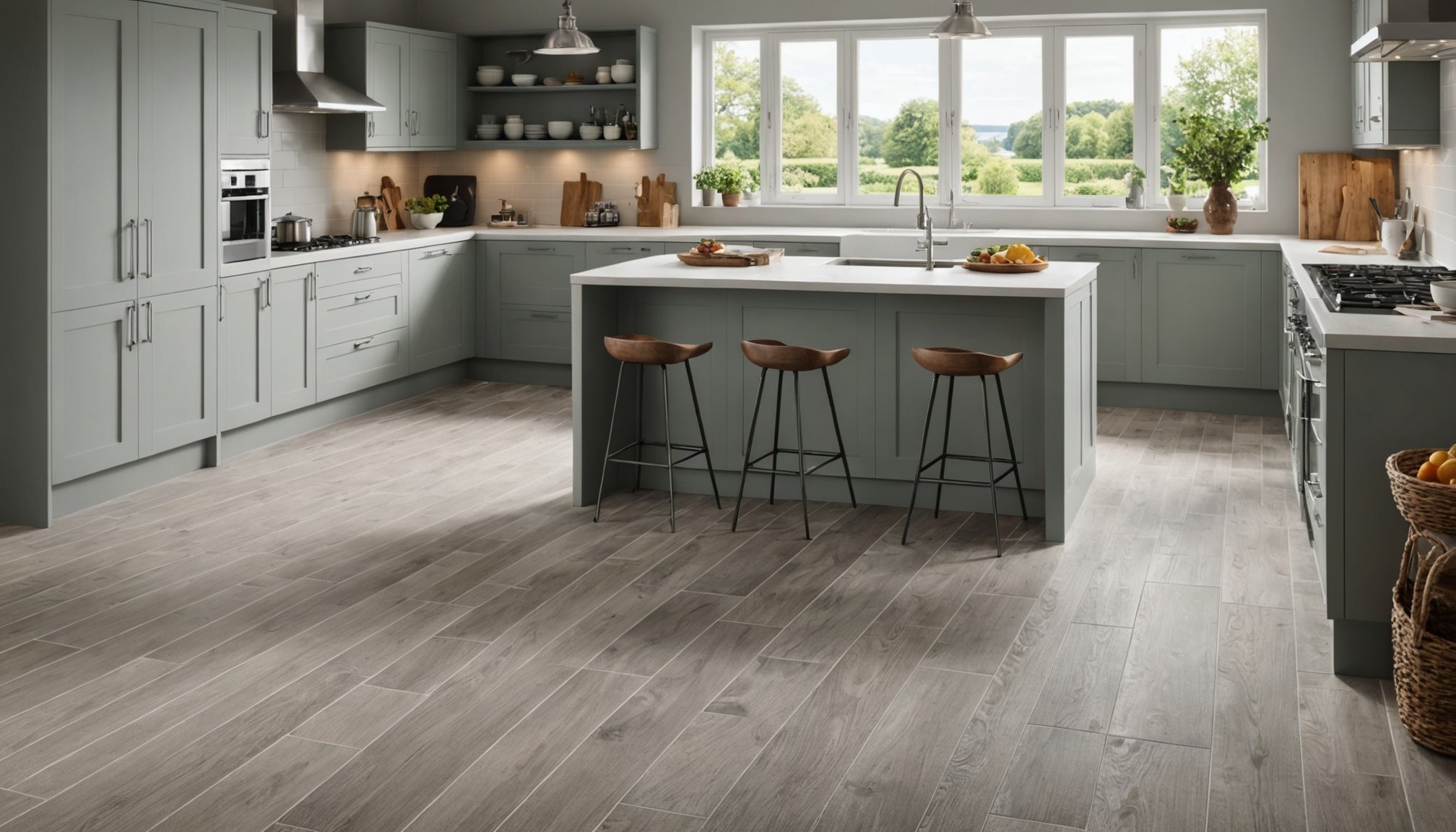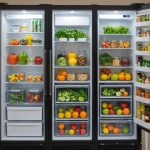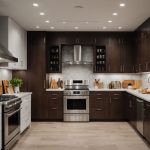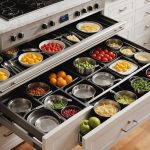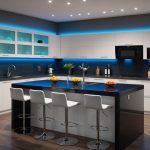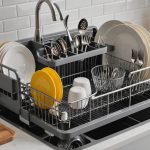Understanding the Coastal Environment
Coastal environments present unique challenges for homeowners, particularly when it comes to choosing suitable flooring. Moisture and humidity levels are significant considerations, as these factors can impact the durability and longevity of your flooring. High humidity can lead to warping or buckling, making moisture-resistant materials imperative for coastal homes.
Saltwater and sand pose additional challenges to flooring. They can scratch, corrode, or degrade certain types of flooring materials over time. Choosing surfaces that can withstand these elements without excessive wear and tear is essential in maintaining their appearance and structural integrity.
Have you seen this : The definitive handbook for selecting the perfect kitchen mixer for baking enthusiasts in the uk
Climate considerations also play a crucial role in flooring choices for UK coastal homes. The frequent exposure to damp and salty air affects not just floors but also the entire structure of coastal living spaces. It’s vital to select flooring materials that can endure such climates, ensuring long-term value and minimal maintenance.
Selecting the right flooring for a coastal home goes beyond aesthetics—it’s about durability against specific environmental factors. To achieve the best results, consider these factors carefully, helping you to choose wisely and enjoy the benefits of coastal living without frequent repairs or replacements.
Also to discover : Ultimate guide to compact drawer organizers for uk kitchens: optimize your storage space!
Types of Kitchen Flooring Suitable for Coastal Homes
When considering kitchen flooring options for coastal homes, it’s vital to select materials that can endure the challenges posed by the coastal environment. Various coastal flooring types offer a balance of durability and style.
Vinyl Flooring
Vinyl flooring is highly resistant to moisture, making it an excellent choice for coastal kitchens. Its waterproof nature helps resist damage from high humidity levels typical of coastal areas. Vinyl is also available in numerous designs, mimicking the appearance of natural materials like wood or stone, offering versatile aesthetic appeal.
Tile Flooring
Tile flooring is another robust option for high-moisture environments. It withstands dirt, sand, and spills effectively, requiring minimal upkeep. However, grout lines may need extra attention and sealing to prevent water infiltration.
Wood Flooring
While less common, wood flooring can be used in coastal kitchens if properly maintained. Selecting engineered wood with a strong finish can enhance resistance to moisture. Regular sealing and maintenance are necessary to protect from warping and swelling due to humidity.
Choosing the right flooring materials ensures that coastal kitchens remain both functional and stylish. Each option has distinct characteristics, catering to different tastes and maintenance preferences.
Pros and Cons of Each Flooring Type
When selecting flooring for coastal living in UK coastal homes, it’s vital to weigh the flooring advantages and disadvantages of each option to suit personal preferences and environmental demands.
Vinyl Flooring
Advantages: Vinyl offers superior moisture resistance, an essential trait in high-humidity environments. It is also versatile in design, providing aesthetics akin to wood or stone without the associated upkeep.
Disadvantages: While durable, vinyl may lack the luxurious feel of natural materials and can be susceptible to fading under prolonged sunlight exposure, a factor in many sunny coastal areas.
Tile Flooring
Advantages: Tiles are an excellent choice for areas prone to saltwater and sand. They are remarkably durable and relatively easy to clean, maintaining their appearance with minimal effort.
Disadvantages: The grouted areas can harbour moisture if not sealed correctly, risking damage over time. Tile flooring can also feel cold underfoot, which may not appeal to everyone.
Wood Flooring
Advantages: With proper care, engineered wood can offer warmth and richness to a coastal home’s design.
Disadvantages: It requires diligent maintenance to avoid damage from humidity, including regular sealing to prevent warping. This option may be less suitable for those seeking low-maintenance solutions.
Maintenance Tips for Coastal Kitchen Flooring
Maintaining flooring in coastal homes requires keen attention to withstand environmental factors. Here are essential tips to prolong the lifespan of your kitchen flooring options in such settings.
Regular Cleaning Regimens
Consistent cleaning is vital. For coastal flooring types like vinyl and tile, daily sweeping or vacuuming helps remove abrasive sand. Use gentle, non-abrasive cleaners to prevent dulling. Wood flooring demands specific products to preserve its finish, preventing moisture seeping into the grain.
Seasonal Maintenance Practices
Seasonal changes can impact flooring durability. During wetter months, ensure high-traffic areas have water-absorbent mats to reduce moisture damage. Regularly inspect and re-seal tiles and wood to maintain their resistance to the humid climate, greatly affecting coastal living longevity.
Repair and Replacement Guidelines
Monitor flooring for any signs of wear such as buckling or warping. Vinyl may need patching if tears occur, while tiles may require grout repairs to stop water infiltration. If flooring materials become irreparably damaged, consider full replacement to maintain structural integrity and aesthetic appeal. Choosing the right time for repairs ensures minimal disruption and cost-efficiency.
Aesthetic Considerations for Coastal Kitchens
When embracing kitchen design in coastal homes, achieving a harmonious coastal aesthetic is essential. Selecting the right colour schemes and textures can significantly enhance the overall appeal of your space. Neutral tones often dominate style trends for coastal kitchens, with soft blues, sandy beiges, and whites invoking the tranquillity of the sea and shore. Incorporating natural textures, such as stone or driftwood, adds an authentic beachy feel.
Flooring plays a pivotal role in accentuating the coastal aesthetic. For seamless integration, consider materials like light-toned wood or tiles with a beach-like texture. These not only complement other design elements but also provide a practical surface suitable for coastal conditions.
Trendiness in coastal kitchens often points to the use of eco-friendly materials, blending sustainability with style. Bamboo or recycled materials can bring a modern touch while remaining functional and resilient.
To create a cohesive look, balance functional elements, like countertops and cabinetry, with style-driven choices in flooring and decor. Embracing nautical motifs or seaside-inspired accessories can complete the look, ensuring your kitchen reflects the beauty and serenity of coastal living.
Cost Comparisons of Flooring Options
Evaluating flooring costs in coastal homes involves examining both initial expenses and long-term value. It’s essential to consider installation and maintenance alongside material costs. Vinyl is often a budget-friendly choice, with lower upfront costs compared to other options. However, keep in mind future repairs, which might add to expenses.
Tile, with its durability, might have higher initial costs. Yet, it offers a longer lifespan in UK coastal homes, potentially reducing replacement frequencies. Remember, quality tiles can be more cost-effective over time if maintained properly.
Wood flooring tends to levitate towards the higher end of the spectrum due to its material and upkeep costs. Engineered wood, although expensive, provides an elegant look, but budgeting for regular sealing and maintenance is crucial in managing long-term financial impacts.
In setting a budget, consider not just the pricing of materials. Installation fees, particularly in moisture-prone coastal areas, can vary significantly. Engaging skilled professionals ensures resilience against environmental factors, optimizing costs by extending the flooring’s life span. Alternatively, evaluate if DIY might suit your circumstances to save on installation expenses, ensuring quality materials are chosen to balance cost and durability effectively.
Installation Advice and Local Considerations
When it comes to flooring installation in coastal homes, careful planning and expertise are vital to ensure durability and longevity. Hiring professional installers is often the best choice. Professionals familiar with coastal installations understand how to manage moisture and humidity challenges effectively. Their experience with local conditions can help avoid potential pitfalls like warping and buckling.
However, if you’re considering a DIY approach, focus on meticulous groundwork preparation and accurate measurements. DIY installation tips include using moisture-resistant underlayments and opting for click-lock systems that offer straightforward assembly. Appropriate sealing is critical, especially if you choose materials like wood or tile.
Adapting to local climate adaptations means selecting materials that can withstand coastal environmental conditions. Consider how sunlight, sand, and saltwater may impact your chosen flooring. For instance, ensuring proper ventilation can reduce trapped humidity, mitigating potential damage. It’s crucial to align the installation process with these climate factors to optimise the flooring’s performance and lifespan.
Whether opting for a professional installation or DIY, recognising the unique demands of UK coastal homes ensures a successful flooring project. Addressing these environmental factors during installation will contribute to a more resilient and aesthetically pleasing coastal living space.

